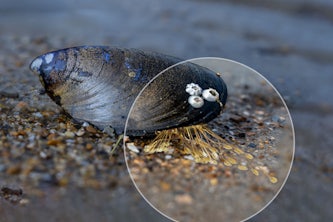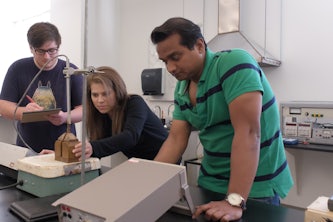Leaded gas was phased out 25 years ago. Why are these planes still using toxic fuel?
Piston-engine aircraft remain the single largest source of highly toxic airborne lead

SAN JOSE, Calif. — Miguel Alarcon made a habit of wiping down his white Ford pickup truck parked in the driveway of his East San Jose home in California. Like clockwork, a layer of grey film appeared on his car every few days, which he believed was an accumulation of exhaust from leaded-fuel planes flying overhead in and out of Reid-Hillview Airport.
“My car was always dirty from the pollution,” said Alarcon, 42, who lived across the street from the airport from 2014 to 2017.
While he lived there, Alarcon said, he also struggled with respiratory issues. His doctor prescribed antibiotics to treat his breathing problems. But when his sneezing didn’t stop, his doctor recommended he move far from the airport in East San Jose, an area where 2.5 percent of children under 6 years old who were tested had detectable levels of lead in their blood, according to the California Department of Public Health's most recent figures, from 2012. He moved out for a price; his rent jumped from $800 to $1,700 a month.
“The problem is sadly it's very expensive here [in San Jose],” said Alarcon, who earns $5,000 a month after taxes as a roofing contractor. “In the airport area, in each house, there are two to three families because it’s so expensive.”
With rent costing more than $3,200 on average for a three-bedroom home in San Jose, many working-class people like Alarcon have been forced into making a wrenching decision: pay more affordable rent but endure poorer air quality.
That’s because Reid-Hillview is one of 13,000 so-called general aviation airports, from which leaded-fuel piston-engine aircraft fly. While leaded gasoline was fully phased out in 1996 with the passage of the Clean Air Act, it still fuels a fleet of 170,000 piston-engine airplanes and helicopters. Leaded aviation fuel, or avgas, now makes up “the largest remaining aggregate source of lead emissions to air in the U.S.,” according to the Environmental Protection Agency.
The presence of this fuel means the areas near these airports are often inundated with tiny lead particles, according to a 2020 report from the EPA. Lead has been proven to have a detrimental impacton children’s brains and nervous systems.
After 15 years of research, the EPA said it would issue a ruling, known as an “endangerment finding,” in 2018 that would unlock a legal mandate to start driving down leaded aviation fuel. But it has yet to do so.
“EPA will follow the science and law in developing any future decisions regarding lead emissions from piston-engine aircraft,” said Enesta Jones, an EPA spokesperson.
For now, leaded aviation gas appears to be caught in a bureaucratic limbo: stuck between not meeting the environmental demands of the EPA and the commercial realities of the aviation community. It is the primary viable option for this type of aircraft, as the general aviation community argues it remains critical given the needs of the current fleet.
“Fuel and emissions are governed by the federal government,” said Eric Peterson, county airports director with the County of Santa Clara, which owns Reid-Hillview. “So until they come up with an alternative fuel, there is a limited amount the county can do to address that.”
Meanwhile residents continue to live with the air quality that comes with living near an airport where small planes burning leaded fuel fly in and out, said Alarcon, who is also a volunteer organizer with the nonprofit tenant advocacy group Vecinos Activos. It’s also unclear to air quality experts and residents what is arguably safe.
“There is no bright line that says 'Above this concentration lead is safe and below this concentration' that it is not. You’d have to make a policy decision,” said Jay Turner, an engineering education professor at Washington University in St. Louis and member of the EPA’s Science Advisory Board. “We’re really careful to come back to this point that just because public areas might meet the EPA standard [for lead] doesn't mean zero risk or zero concern.”




